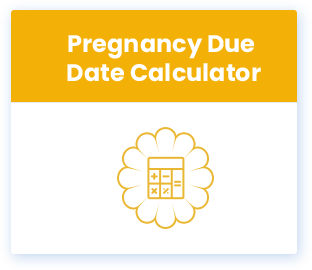Every expectant mother should know about the symptoms of labor pain during the delivery. Even though the labor pain varies for different women, still you must be aware that it is labor pain or a false alarm. This will help you and your family to prepare for the arrival of the baby.
What is Labour Pain?
Labor is the part of childbirth that includes uterus contraction, dilation of the cervix, and delivery. Some physical changes will happen as you near the due date of the delivery. Some subtle changes appear in your body when you get closer to your due date. This can be the early signs of symptoms of labour pain in 9th month that can happen anywhere from hours to a few days from the transition of active labor to the baby’s arrival.
Every mother should be aware of the delivery pain symptoms or labour pain symptoms and be prepared for the delivery when the due date arrives. It can have any symptoms as listed below.
Labour Pain Symptoms That Every Expecting Mother Should Know
Explore below to learn about the common labour pains symptoms that every expecting mother should be aware of, ensuring a smoother and more informed childbirth experience.
1. Frequent and Stronger Contractions
Pregnant women might experience strong and frequent contractions which is the actual labor pains symptoms. This is more focused on intensity, location, and frequency. They are spaced at intervals of regular timings and become more as time flies. Each contraction lasts for about 30 to 70 seconds and it is strong. Even if the pregnant woman tries to change her position it doesn’t fade away but increases as time goes on. Once they get progressive you will not be able to talk and walk.
2. Water Breaking
Breakage of water is the final thing you might face as your due date is near. The membrane gets ruptured and the amniotic fluid starts to leak. This happens when the other symptoms have already begun. It doesn’t need to flow in a big gush. It can happen slowly as well without even knowing. This water breakage happens naturally in women with chances less than 15 percent. So this is not the only one among the definite signs that labor is 24 to 48 hours away.
Also Read: Tips for Normal Delivery
3. Painful Lower Back and Belly
Severe stomach pain and abdominal pressure may occur once your labor starts. Cramps that you face during menstrual time can also occur. Labor pains symptoms also include lower back pain that could radiate down the legs. Even if you try to change your position this pain will not go away. This can be a sign of your approaching labor.
4. Cervix Dilates
Since your cervix is preparing for birth, it gets dilated as it is ready for childbirth, which is a labor pain sign for you.
It starts to open and thin out in regular intervals. This is also checked during your checkups by your provider through an internal examination. Your dilation and effacement are measured and tracked. Since the progress is different for every woman, never get disappointed.
5. Baby Drops
Baby dropping or lightening happens a few weeks before the labor. This generally happens two to four weeks before the birth of the baby. Baby drops mean that the baby descends into your pelvis which few women may not even notice this labor pain sign. This happens only once if the pregnant woman is in active labor, which denotes the baby is preparing for the exit ideally with the head down and in low angle.
6. Increase in Discharge
During pregnancy, many women have an increase in their vaginal discharge called leukorrhea. When they are nearing labor, the amount of discharge increases as the week increases. This is because the vagina prepares itself to deliver the baby so that it is easy for the baby to pass through the birth canal.
Also Read: How to Cope with Prodromal (False) Labor Pain
7. Easier Breathing
When pregnant women are nearing their labor, they can breathe more easily since the baby descends to the pelvis region. The weight of the baby no longer presses the diaphragm, since the baby has moved down a bit you will be able to breathe better. This also could be a sign of your labor.
8. Frequent Urination
When you are nearing labor, you might feel the urge to urinate more frequently than in the third trimester. This is because women approaching labor will have their baby in a low position and the head will put more pressure on the bladder. Hence frequent urination is one of the delivery pain symptoms.
9. Visible Blood Drops
When you are pregnant, the cervix is closed and mucus is plugged, which acts as a barrier for the uterus from outside. These are extremely helpful signs that labor is 24 to 48 hours away and also for the baby since it is the defense mechanism against the infection causing them. But when you approach your labor, the cervix gets softened and also thin, for the baby to come out. This in turn results in the plug falling off as a runny smear or a blob. When the cervix is ready to open and thin, the small blood vessels along the surface get diluted and released as mucus with pink or brown color blood. It doesn’t mean that every woman will have this symptom. But when u have, remember your delivery could be just days away.
10. Fatigue and Tiredness
The final days could be extremely tiring and difficult to rest. Your sleep cycle will be disturbed due to the grown belly. With the compression of your bladder and other organs, pregnant women might not be able to sleep. This causes excessive tiredness and fatigue when the labor is near and is one of the major delivery pain symptoms. To avoid fatigue and tiredness you can take naps to restore the energy.
Few pregnant women may experience a surge in their energy levels. This is also called the nesting instinct. As the baby’s birth is approaching, or signs that labor is 24 to 48 hours away, you might feel a surge in your energy but remember not to overboard.
What are the Different Stages of Labour?
Understanding the stages of labour can help expecting mothers and their partners prepare for childbirth. Find different stages of labour explained in detail below.
Start of Labour
Labour pain symptoms begin when contractions start, which are like strong period pains. Sometimes, the water around the baby breaks, and fluid comes out. This stage can last for hours or even days as the body prepares for birth.
1st Stage of Labour
The longest stage is divided into three labour pains signs including early labour, active labour, and transition. Early labour features regular contractions that gradually open the cervix. Active labour sees stronger contractions as the cervix continues to dilate. Transition is the final, intense phase with complete dilation.
2nd Stage of Labour
The second stage begins when the cervix is fully open. Now, you push to deliver the baby through the birth canal with each contraction. The healthcare provider guides you through pushing until the baby’s head and body are out, ending with the baby’s birth.
3rd Stage of Labour
After the baby is born, the third stage starts. It involves delivering the placenta, which is called the afterbirth. Mild contractions may continue as the placenta comes out. Once it’s out, the third stage is over, and you can focus on bonding with your baby.
Conclusion
Every pregnancy and labour pain sign is different. Most of the women can predict their path when they progress through months. Note down all the early signs of labour and be prepared for your delivery. Labor contractions will become pretty consistent and they become more painful. This is the time to call your doctor and have a consultation.
FAQs on Labour Pain Symptoms
How does Labour pain start?
Contractions are typically the first stages of labour pain. These contractions feel like severe menstrual cramps and become more frequent and intense over time.
How do I know if I have labour pains?
You’ll know you’re having labour pains when you feel strong, rhythmic contractions in your abdomen or lower back. These labour pain symptoms come and go at regular intervals, gradually becoming stronger and more frequent over time.
What are the 3 true signs of labour?
The three true signs of labour or labour pains symptoms are regular contractions, cervical dilation, and effacement (thinning) of the cervix. These signs indicate that your body is preparing for childbirth.
How can I have painless labour?
While labour is naturally associated with pain, there are methods to manage and reduce discomfort. Techniques such as relaxation exercises, breathing techniques, massage, warm baths, and labouring in different positions can help alleviate pain.
More Blogs To Read
7 Pregnancy Tips To Consider For An Expecting Mom
Tips To Make Your Pregnancy Easier And Even More Beautiful
5 most useful things to be done during pregnancy!!
Top 19 Symptoms of Baby Boy During Pregnancy
Top 20 Symptoms of Baby Girl During Pregnancy
- Baby Monitors with Noise Monitoring: How They Work and Why They Matter - October 2, 2025
- Attachment Parenting Guide: Principles, Practices, and What to Expect - September 9, 2025
- Understanding Your Baby’s Cry: A Parent’s Mini Guide - June 23, 2025
- Bottle vs. Breastfeeding: What Works for You and Your Baby - June 18, 2025
- 10 Yoga Poses For Kids at Home: Benefits Of Yoga For Kids - June 12, 2025
- Parenting Guide to Child Development: Key Milestones from Birth to 10 Years - June 4, 2025
- Summer Vacation Plans Ideas with Kids - May 27, 2025
- Nutritious Dried Fruit Treats for Toddlers (16–24 Months) - May 25, 2025
- Importance of Screen Time Management for Kids - May 24, 2025
- The 6 Most Common Pregnancy Concerns First-Time Moms Have - May 23, 2025













